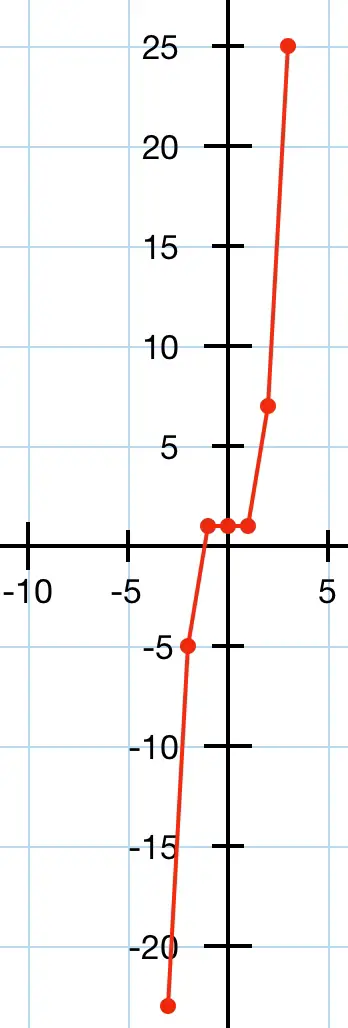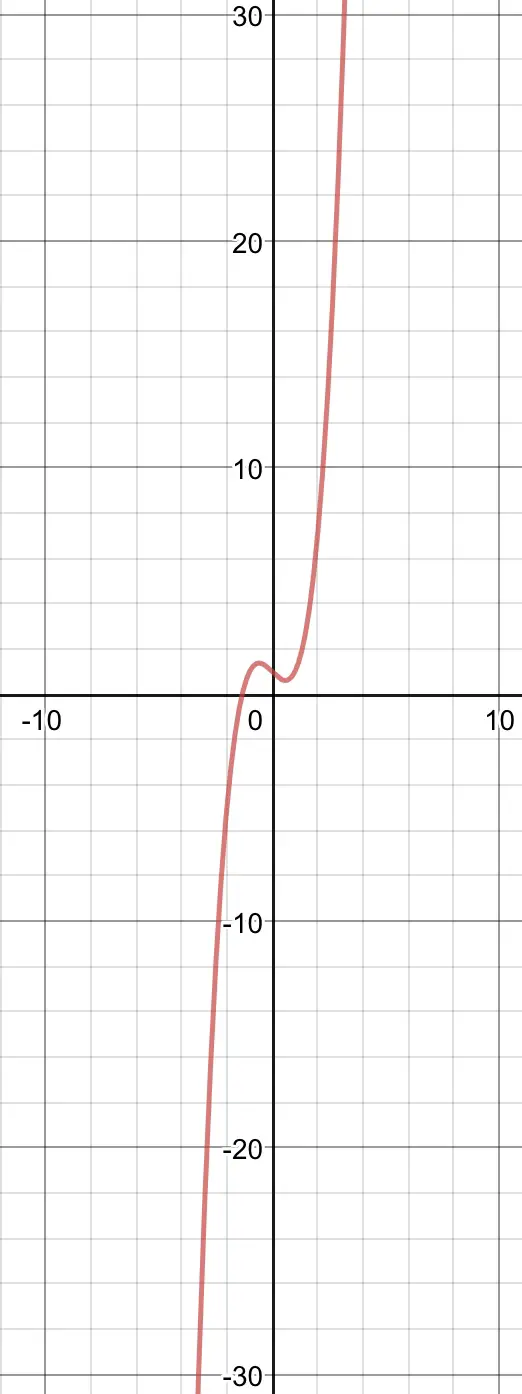You can piece the graph together by calculating the slopes between various points. The slopes are the hypotenuses of right angled triangles. The curve is then made up of line segments created by (or by just joining the points). For example, you could make a table of x values: -2, -1, 0, 1, 2, etc., that is, sufficiently close together and work out the y values. Since the x values are 1 unit apart the slope will just be the difference between consecutive y values. You construct a small right triangle for each pair of coordinates.
Another useful part of the graph is when there’s a change of direction so the slope is horizontal, for example, and the graph is concave up or down. The slope can be positive (leaning to the right or increasing) or negative (leaning to the left or decreasing), that is, as x increases y is either increasing or decreasing. You can sketch the slopes and then draw the curve of the graph to follow the slopes. After a bit of practice you become quite proficient at drawing curves. Straight line graphs are easy to draw because their slopes are constant.
An example is shown below for y=x³-x+1 and values of x between -3 and 3.

Here’s the actual graph for comparison:
